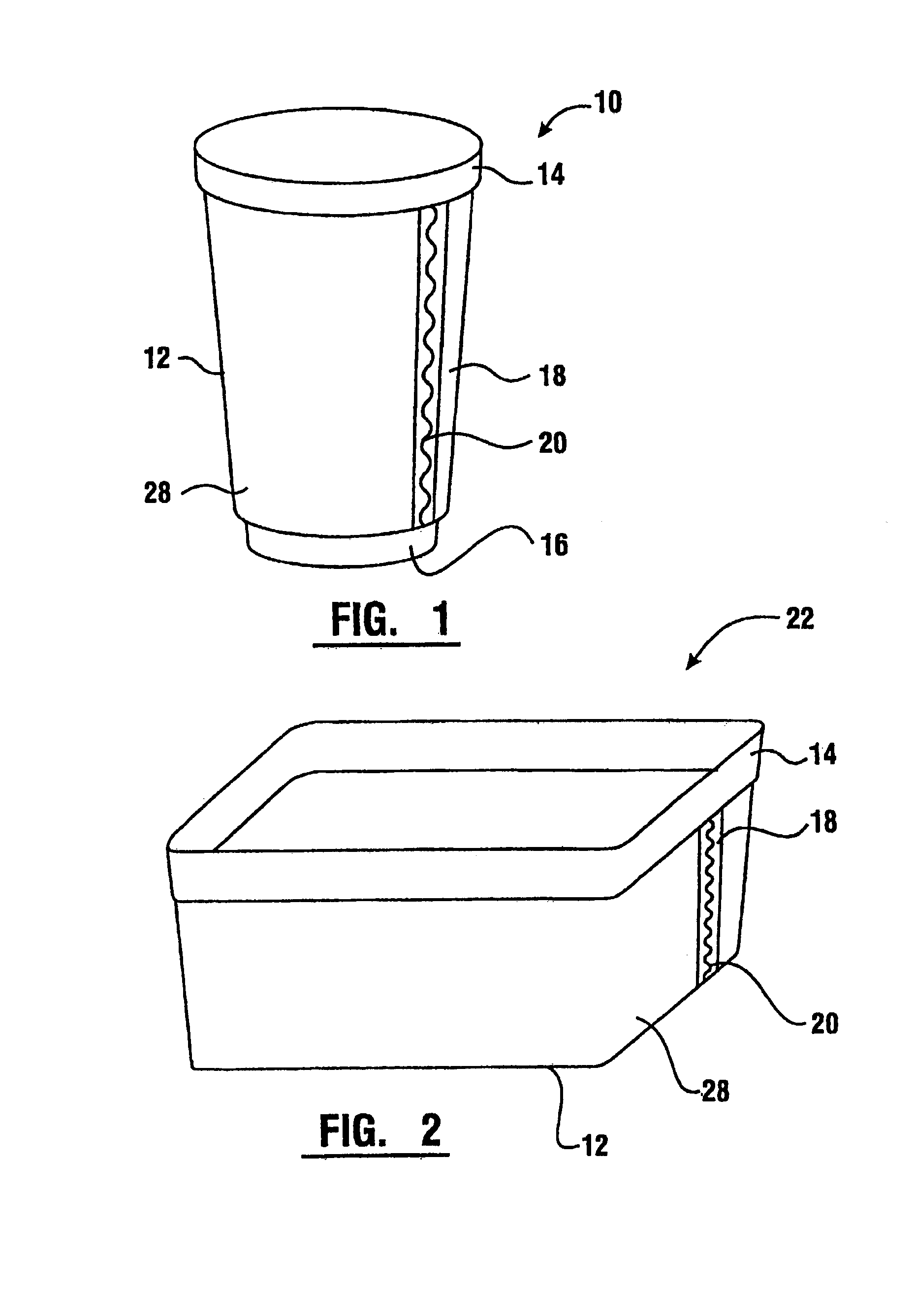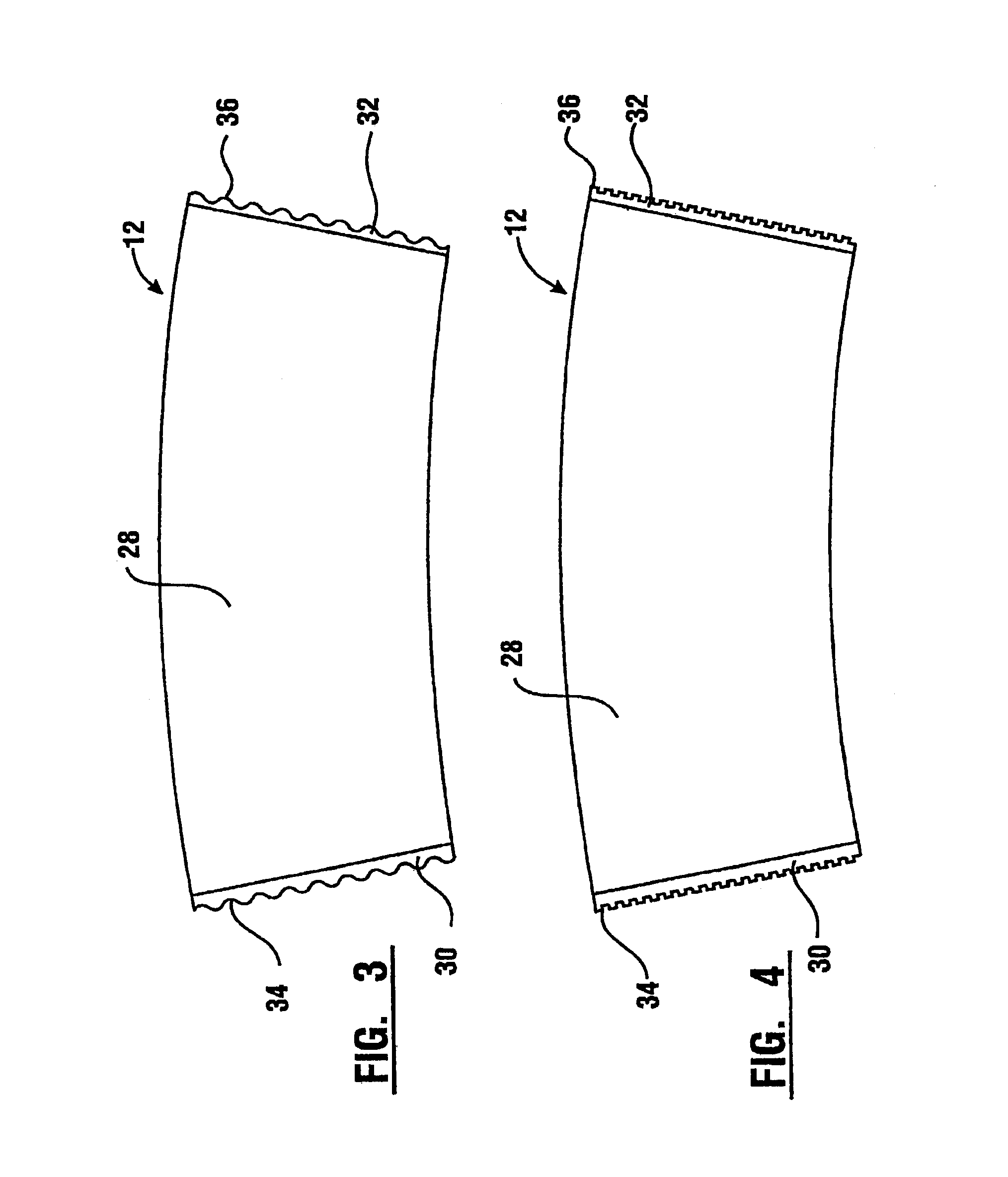Label ledge for injection molded containers
a technology of injection molding and label ledges, which is applied in the field of improved labeling for food and drink containers, can solve the problems of increasing the cost of each container, affecting the quality of the container, so as to reduce the cycle time and minimize the associated costs
- Summary
- Abstract
- Description
- Claims
- Application Information
AI Technical Summary
Benefits of technology
Problems solved by technology
Method used
Image
Examples
Embodiment Construction
[0050]It should be understood that positional references in this specification, including but not limited to above, below, right, left, vertical, and horizontal, are used solely for the purpose of identifying the portion of a particular illustration to which reference is made, and do not indicate an absolute position.
[0051]Referring now to FIG. 1, there is shown a cup formed using an injection mold. The cup is generally referred to by reference numeral 10. Cups 10 of this nature are often provided to customers buying beverages at carry-out restaurants, sports events, amusement parks and other similar events. Cups 10 are often taken home by customers, and reused for casual dining, providing an opportunity for others to view whatever design is on the cup 10.
[0052]The exemplary cup 10 bears a label 12, which wraps around the cup 10, and was applied in mold. As illustrated in FIG. 1, label 12 contains a joined registration area 18. Roughly in the center of the joined registration area 1...
PUM
| Property | Measurement | Unit |
|---|---|---|
| perimeter | aaaaa | aaaaa |
| thickness | aaaaa | aaaaa |
| shape | aaaaa | aaaaa |
Abstract
Description
Claims
Application Information
 Login to View More
Login to View More - R&D
- Intellectual Property
- Life Sciences
- Materials
- Tech Scout
- Unparalleled Data Quality
- Higher Quality Content
- 60% Fewer Hallucinations
Browse by: Latest US Patents, China's latest patents, Technical Efficacy Thesaurus, Application Domain, Technology Topic, Popular Technical Reports.
© 2025 PatSnap. All rights reserved.Legal|Privacy policy|Modern Slavery Act Transparency Statement|Sitemap|About US| Contact US: help@patsnap.com



